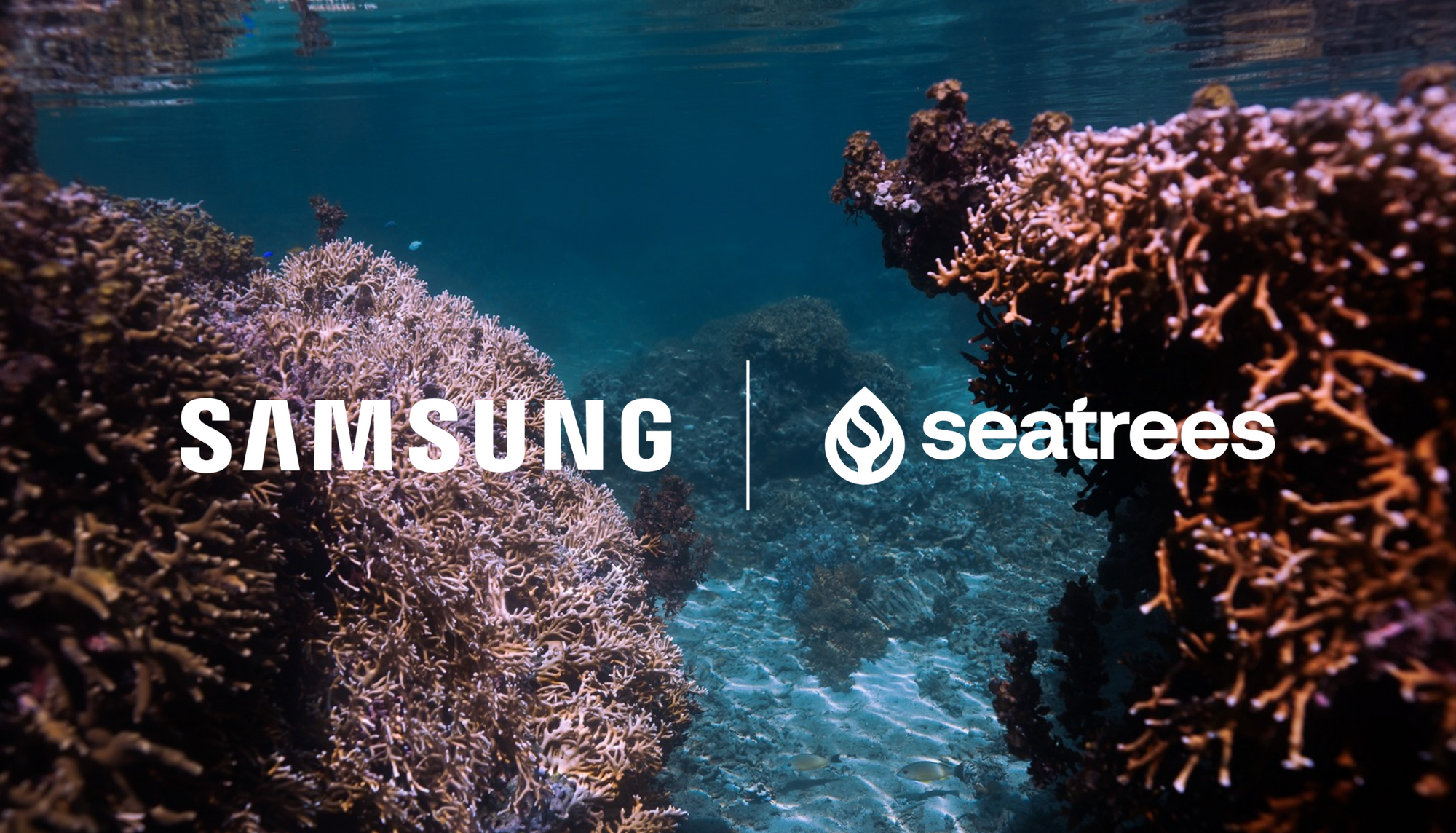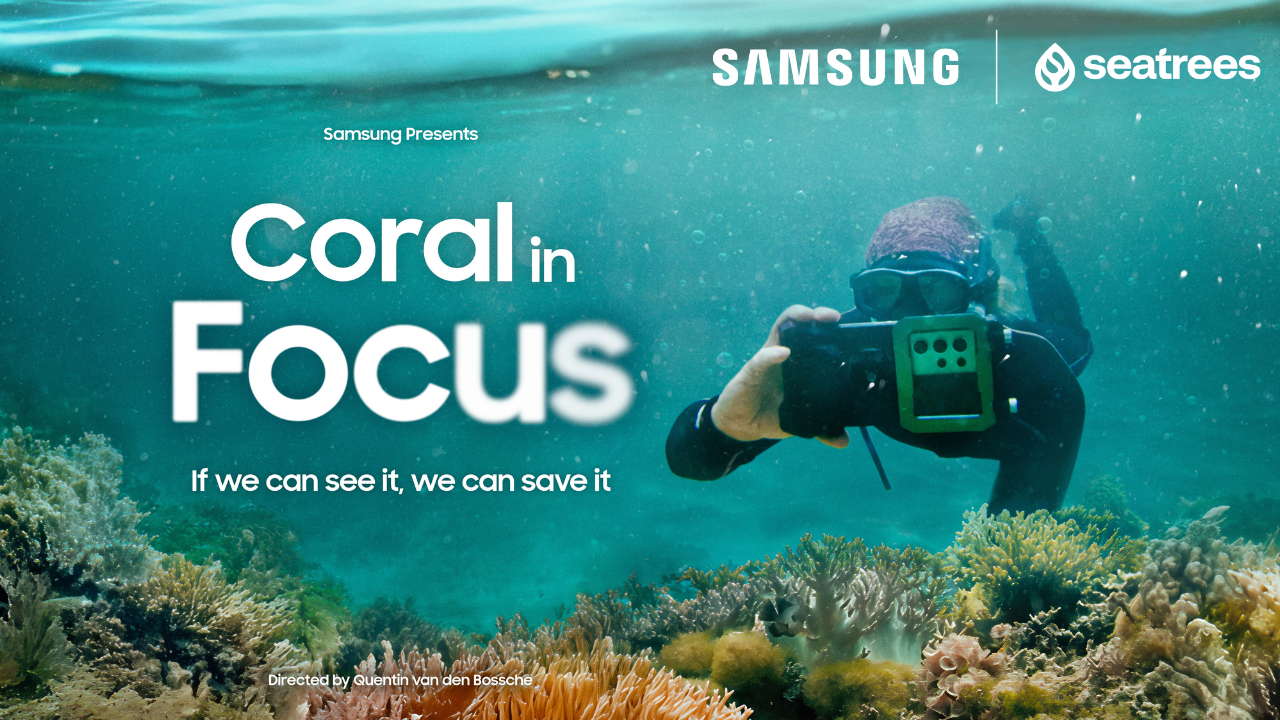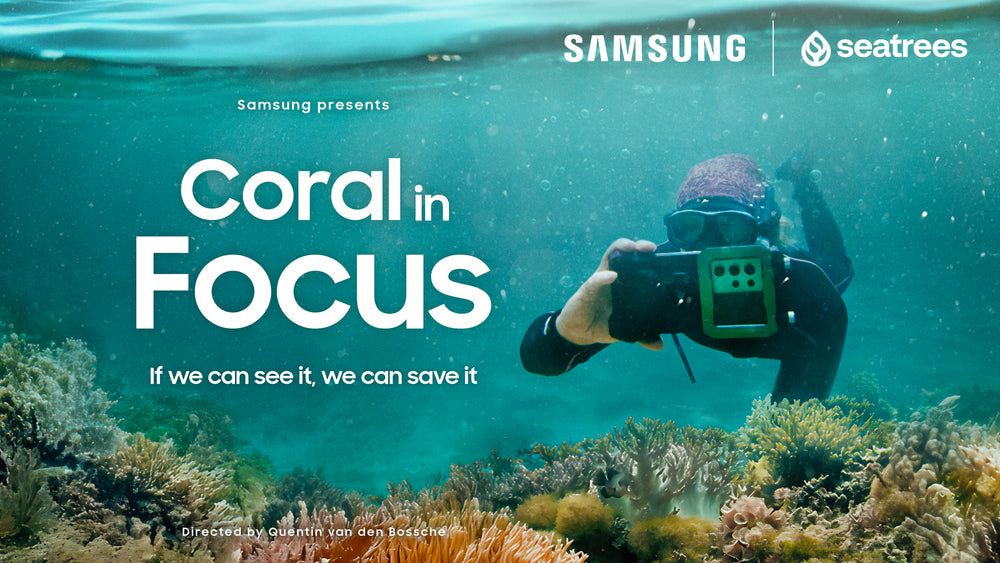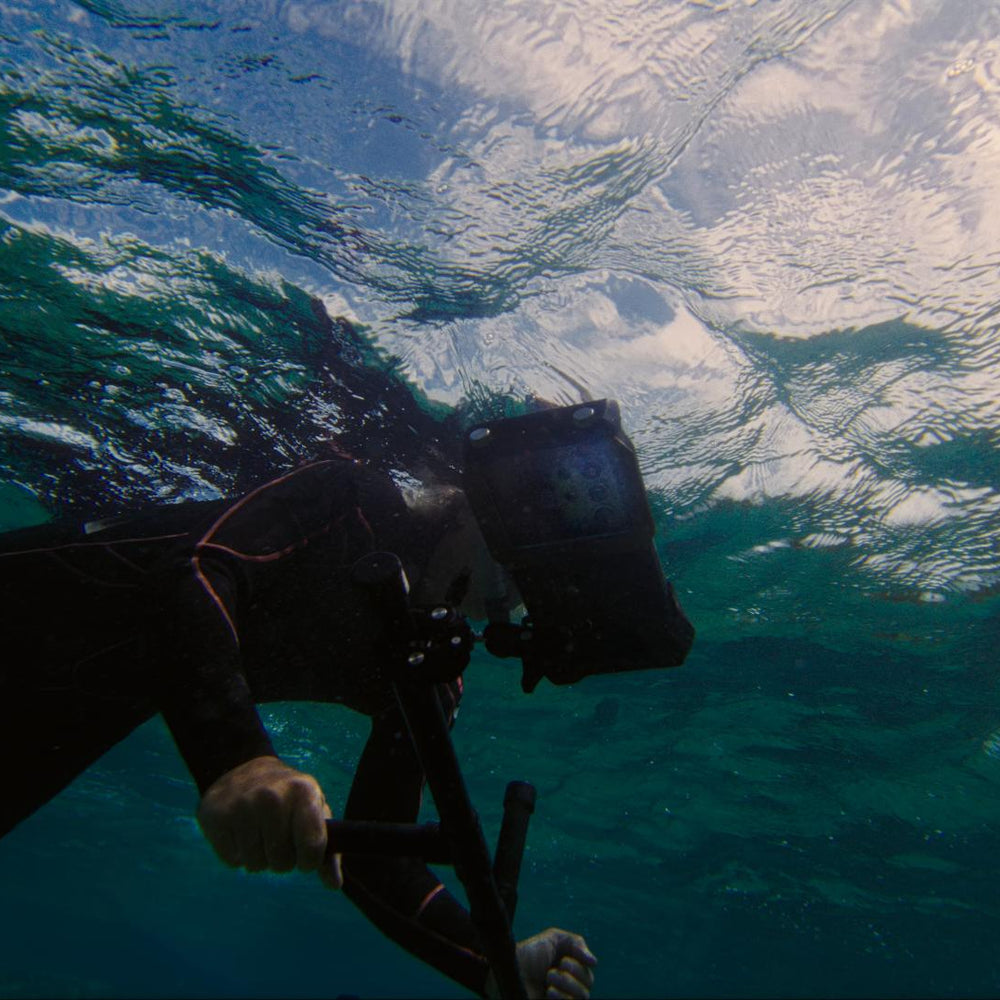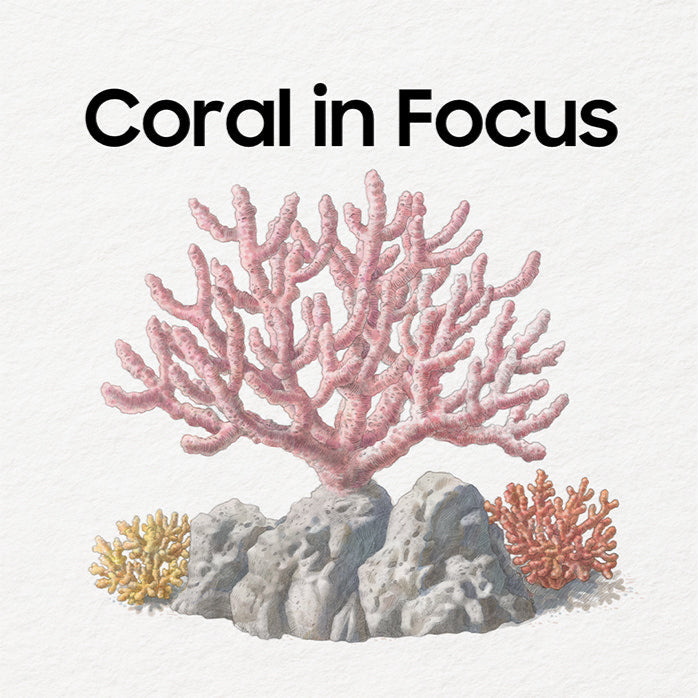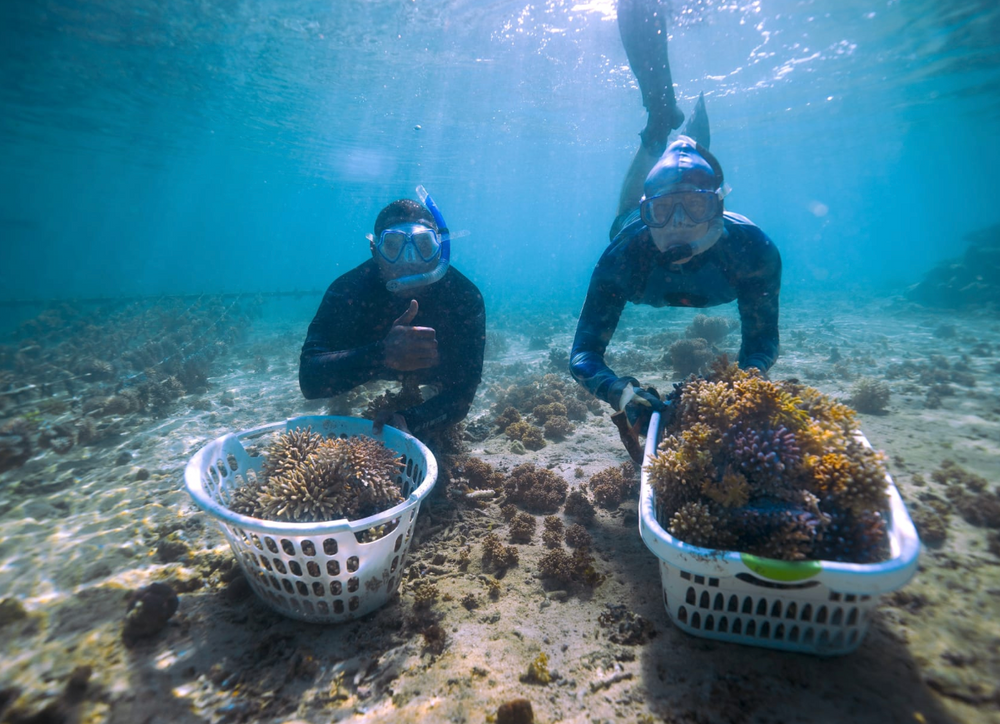Merging Innovation and Restoration to Protect Coral Reefs Worldwide
Samsung and Seatrees have joined forces to restore and safeguard one of the planet’s most threatened ecosystems: coral reefs.
Bringing together mobile innovation, marine science, and community action, the partnership aims to accelerate reef restoration in some of the world’s most biodiverse coastal regions. With Samsung’s advanced imaging and mobile technology, scientists and local conservationists can now monitor coral health more easily – in the field, with a handheld device.
By using a smartphone to capture underwater pictures, restoration groups are now able to apply 3D photogrammetry – a technique that stitches overlapping images into detailed 3D models of reefs – to track coral growth, biodiversity, and structural changes accurately and efficiently. This major step forward in accessibility empowers local communities to measure restoration progress right in their backyard – a critical step forward for grass-roots conservation and climate action.
In partnership with University of California San Diego and the Scripps Institution of Oceanography, the initiative is now active in Fiji, Indonesia, Costa Rica and the Florida Keys. Each site is equipped with Samsung Galaxy devices featuring Ocean Mode, a custom camera setting designed specifically for a diver or snorkeler to easily capture high-quality imagery of coral reefs.
Through Coral in Focus, our new documentary film, we invite you to explore this collaboration in action and see how technology, science, and local communities are coming together to protect the ocean.
It’s a new chapter for coral – and a new approach to global conservation.
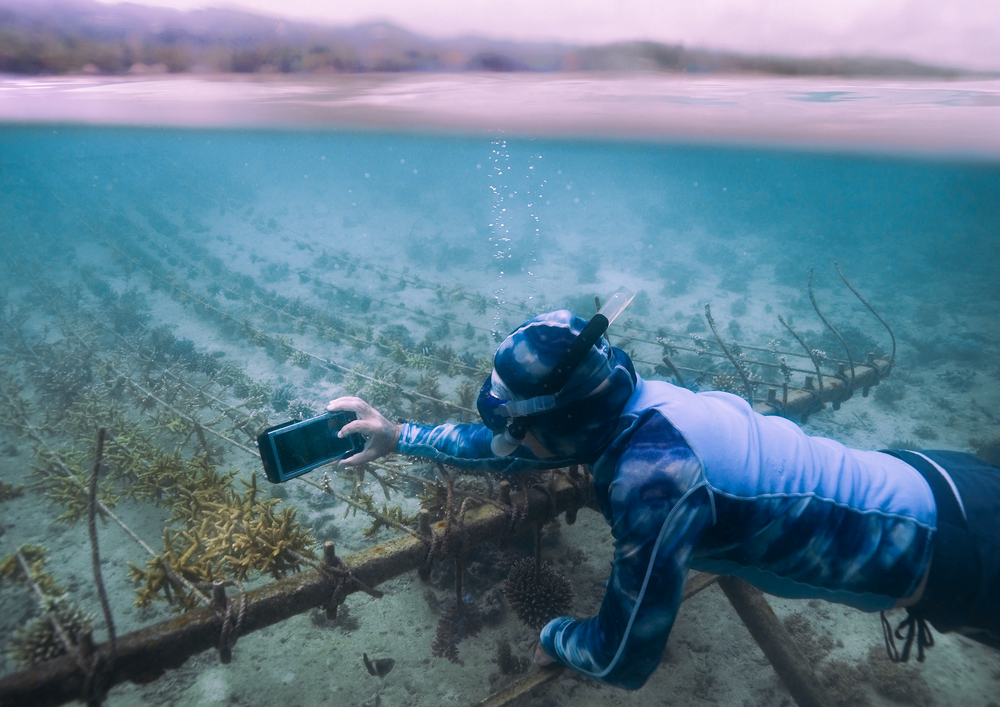
Coral in Focus
Dive into the heart of our work in Fiji with Coral in Focus, which follows the impassioned scientists, smartphone engineers, divers, and local leaders restoring coral reefs on the frontlines of climate change. Set in the vibrant waters off Viti Levu, and shot in Seoul and the U.S. as well, the film highlights efforts to plant thermally resilient corals and bring damaged reefs back to life.
The story captures the beauty and urgency of ocean restoration efforts, featuring Galaxy smartphones withOcean Mode. In these moments, you see how mobile technology is helping researchers and local conservationists monitor reef health and track restoration progress—before it’s too late.
Project Sites: Global Restoration in Action
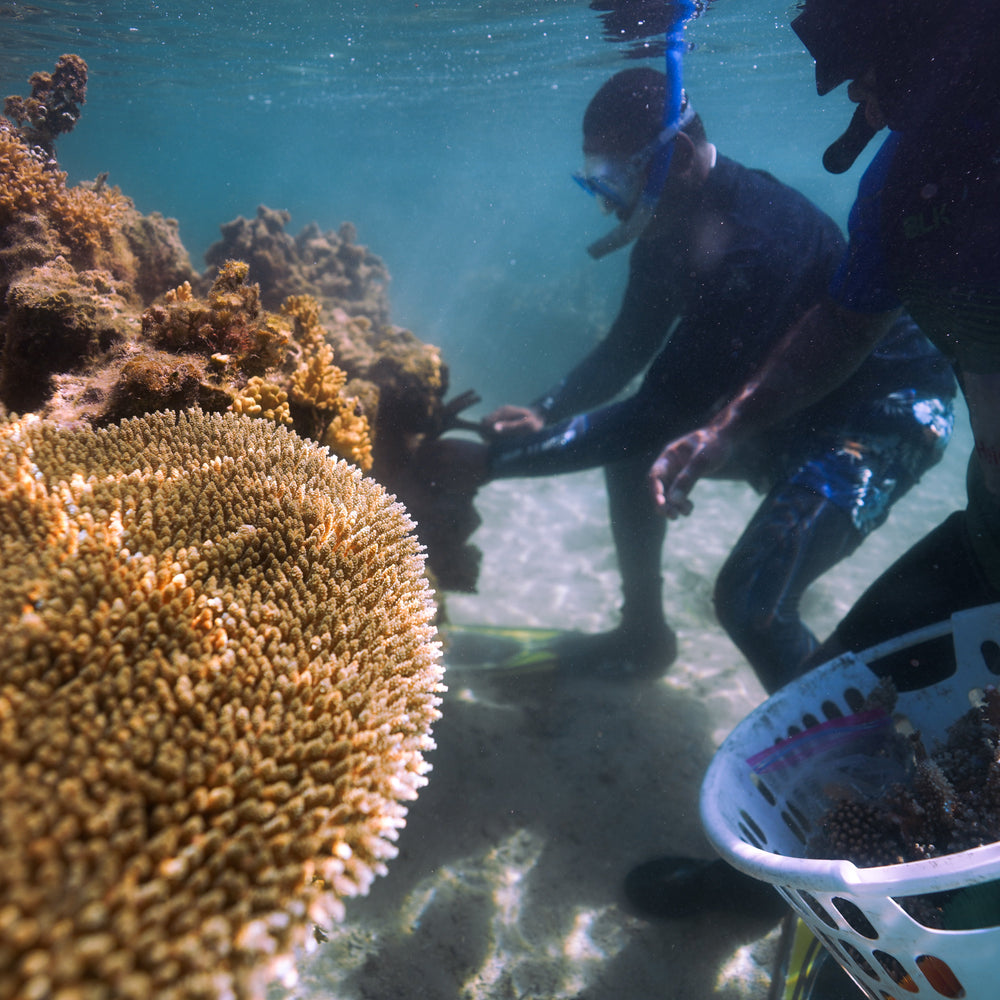
Viti Levu, Fiji
This project focuses on restoringshallow water reefs off Viti Levu. Here, 6,000 branching corals are grown in ocean nurseries for up to a year before being transplanted onto bare patches of coral reef within a locally managed marine area (LMMA). The outplanting mirrors the reef’s natural contours for better integration and uses thermally tolerant corals - species that survived past bleaching - to build long-term resilience against rising sea temperatures.
Highlights:
- 6,000 coral fragments grown and outplanted
- Organic cluster shapes designed to fit reef contour
- Uses heat-resistant coral species to enhance resilience
- Predator control through the removal of the Crown of Thorns Starfish
- One-year nursery phase before transplantation
Project Partner: Reef Explorer
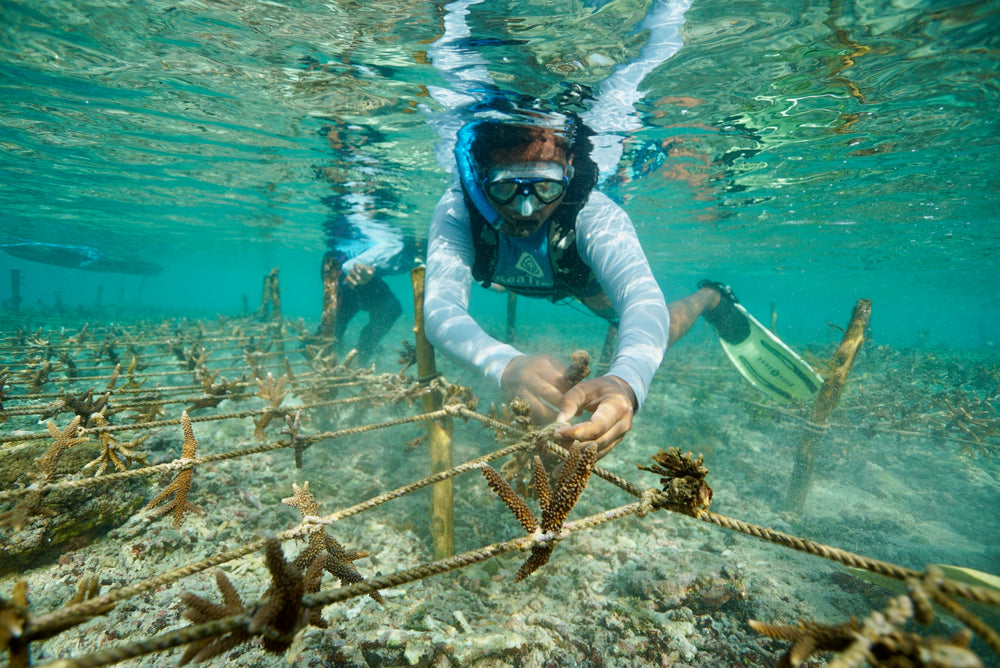
Nusa Penida, Bali
We’re working with Ocean Gardener to restore reefs in both shallow lagoons and deeper, cooler waters off Nusa Penida. The team is planting 5,000 hard and soft coral fragments onto degraded reefs using an innovative “community cluster” method. Baby corals are arranged in a checkerboard pattern to boost survival and cohesion. Local teams maintain the site to protect young corals from threats like predators, sedimentation, and algal overgrowth. This location is uniquely positioned to grow thermally resilient corals in varying depths, offering added protection from warming seas and bleaching.
Highlights:
- 5,000 corals planted in a shallow lagoon and in water over 10 meters deep
- Checkerboard “community clusters” promote group survival
- Regular monitoring and removal of predators and sediment
- Focus on natural resilience to rising ocean temperatures
Project Partner: Ocean Gardener
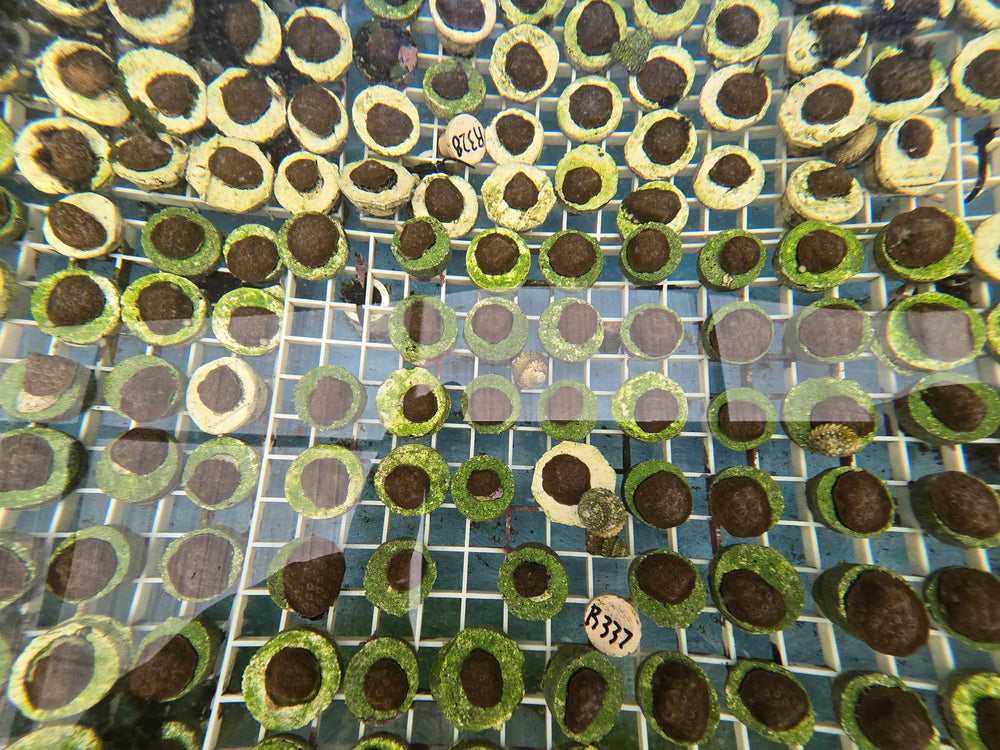
Florida Keys, US
This project pioneers micro-fragmentation – cutting small pieces from slow-growing mound (or boulder) corals and placing them close together on coral plugs, where they rapidly fuse into a single colony. The corals are raised in land-based tanks for a year, protected from pests and bleaching, then replanted onto degraded reef structures. This method accelerates growth and allows for consistent monitoring and innovation in coral propagation.
Highlights:
- 3,000 mound corals grown using micro-fragmentation
- Raised in controlled, land-based saltwater tank
- Replanted after one year onto reef sites
- Enables faster growth of slow-growing coral species
Project Partner: Plant a Million Corals
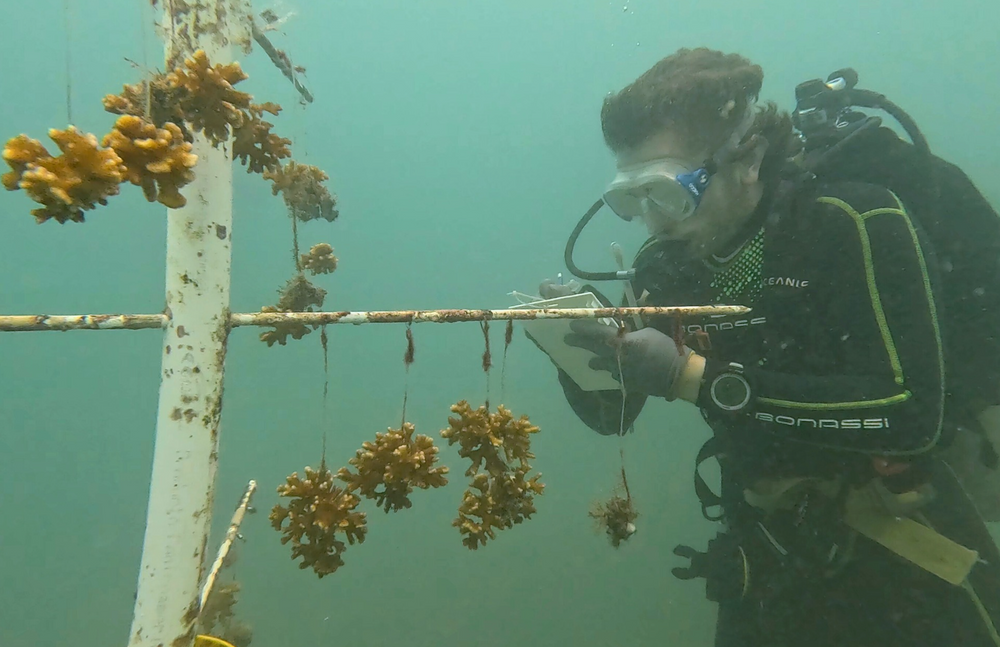
Costa Rica
This project in Costa Rica brings technology-driven restoration model to one of the world’s rare tropical fjords. Located on the Pacific coast, this site leverages local community participation, underwater nurseries, and advanced imaging tools to rebuild reef structure and resilience in a dynamic coastal environment. Through this effort, we aim not only to transplant thermally tolerant corals but also to monitor reef health continuously, adaptively manage threats like sedimentation and algal overgrowth, and train Costa Rican “coral gardeners” to ensure long-term stewardship.
Highlights:
- 1,500 corals planted
- 10-16 reef models
- 3D photogrammetry used to track coral growth and reef structure
- Local community members trained in coral restoration and monitoring
- Regular maintenance and predator control to ensure high survival rates
Project Partner: Raising Coral

Partnership Impact Metrics
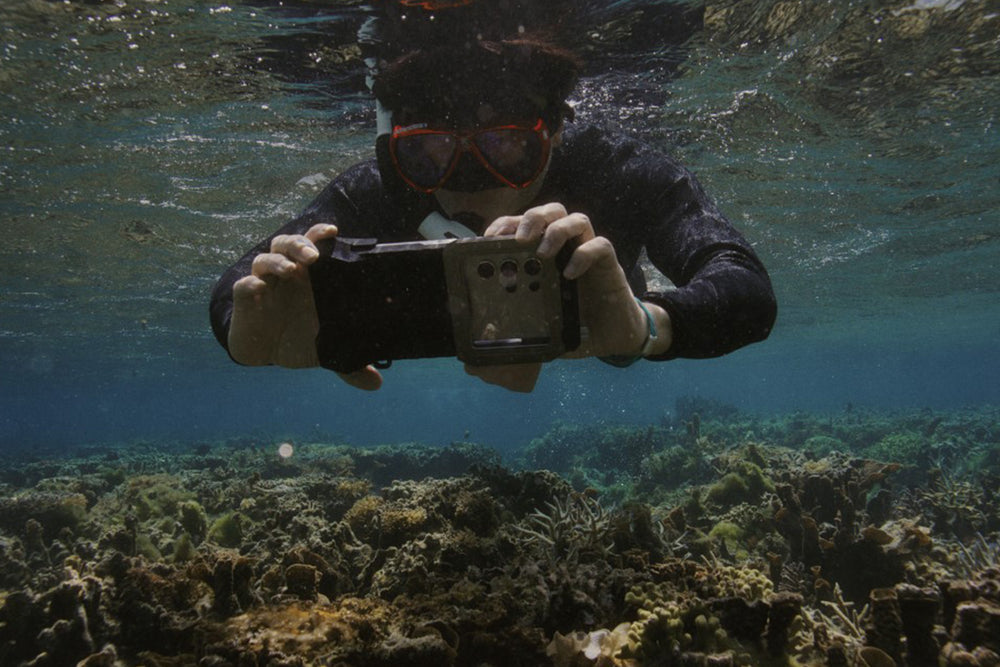
What is Photogrammetry?
Photogrammetry is the process of reconstructing detailed three-dimensional models from overlapping imagery, often with Samsung Galaxy devices and the Oasis app. Divers can use photogrammetry to document coral reef change by take hundreds of overlapping photographs from different angles, which are stitched together using specialized software. In Seatrees' projects 3D photogrammetry is used to:
- Monitor coral growth over time with precision.
- Track biodiversity improvements and structural changes in the reef.
- Assess reef health after storms or restoration interventions.
- Give scientists and local restoration teams a visual tool to measure and communicate progress.
By combining this technology with hands-on coral planting and community-based conservation, Seatrees and partners can scale restoration efforts more effectively, and transparently, while empowering local teams to lead long-term reef recovery.
Explore the reef and see restoration progress firsthand.
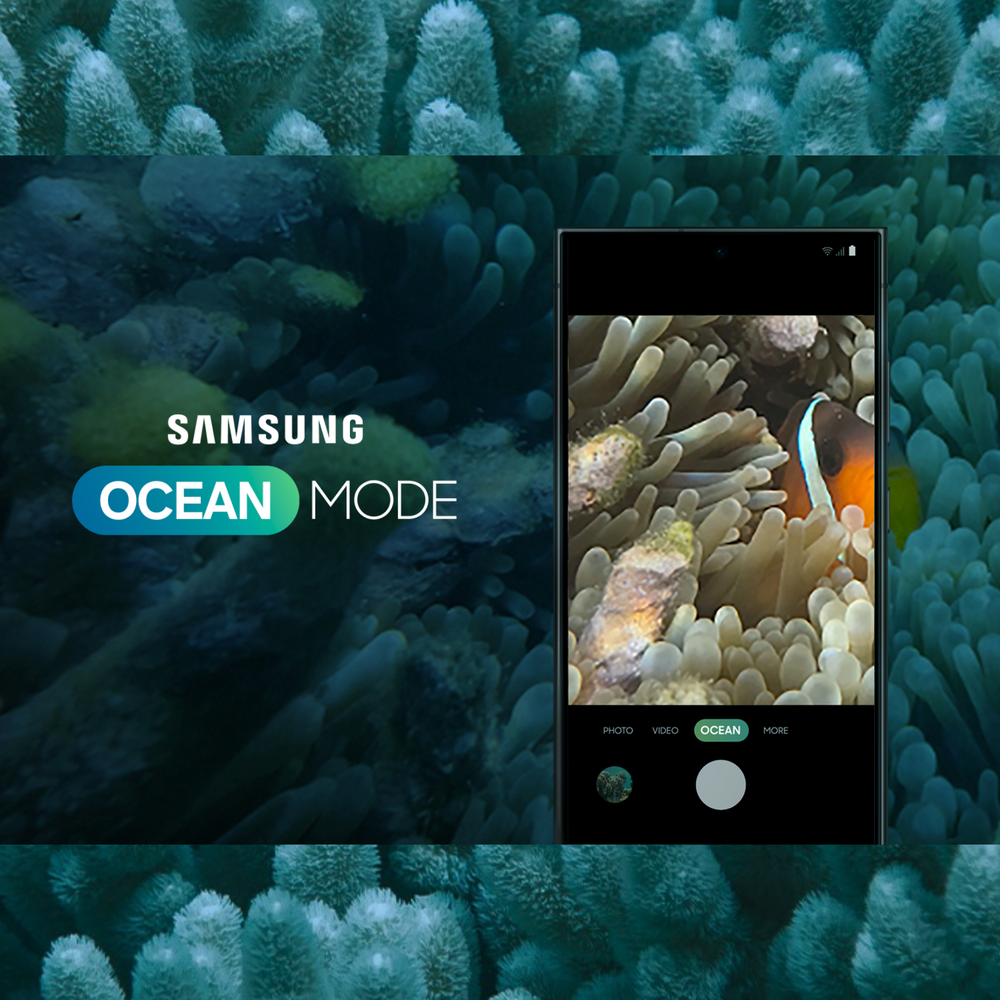
Ocean Mode
Samsung Galaxy smartphones equipped with custom “Ocean Mode” and the Oasis app (developed at UC San Diego) are currently being trialed by local teams to capture high-quality underwater imagery - once only possible with costly, specialized equipment.
This imaging breakthrough:
- Makes coral monitoring more accessible and affordable
- Helps teams track coral growth and reef health over time
- Provides compelling visuals to engage and inform the public
- Supports data sharing between communities and scientists
Active research and development are ongoing to continue to improve the usability of these features for local communities, restoration groups, and citizen scientists.
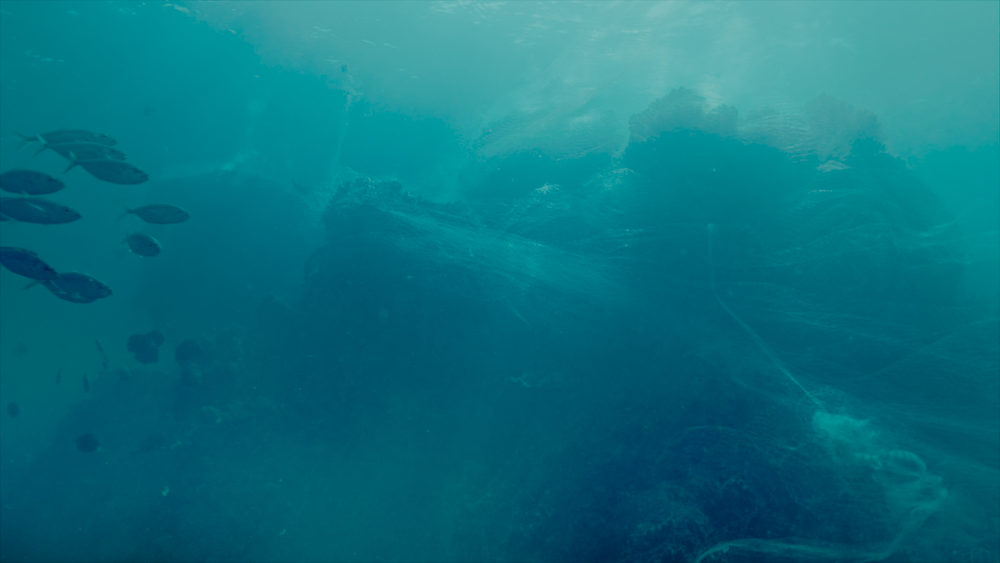
A Broader Commitment to the Ocean
This initiative builds on Samsung’s ongoing work to reduce ocean plastic and protect marine ecosystems. Since 2022, the company has repurposed more than 150 tons of discarded fishing nets into Galaxy device components. Now, through its partnership with Seatrees, Samsung is turning its technology into a tool for restoration, offering communities and researchers a low-cost, scalable way to protect coral reefs.
